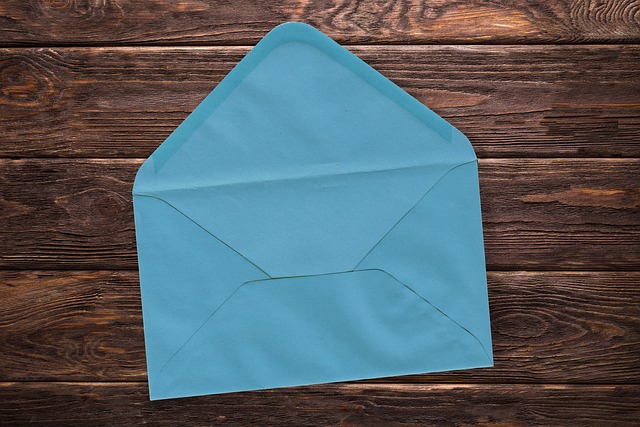Envelope manufacturing involves the production of envelopes from raw materials to the finished product. Here are the key steps involved in envelope manufacturing:
- Paper Cutting: The envelope manufacturing process begins with cutting large sheets of paper into the appropriate size for the desired envelope.
- Folding: The cut paper is then folded into the shape of the envelope, typically using automated folding machines that can handle high volumes.
- Gluing and Sealing: The folded envelope is sealed using adhesive or glue. Various methods can be used, including traditional gumming, self-seal adhesive, or peel-and-seal closures.
- Window Cutting (If Applicable): For envelopes with windows, a specific area of the envelope is cut out to allow visibility of the address or other information on the enclosed document.
- Die-Cutting (If Applicable): Die-cutting is used to create special envelope shapes or features, such as custom window shapes or unique envelope designs.
- Printing (Optional): Envelopes can be printed with logos, branding, return addresses, or other customized information. Printing can be done before or after the envelope is folded and glued.
- Quality Control: Each envelope is inspected for quality assurance, ensuring that it meets the specified dimensions, adhesive strength, and overall appearance.
- Packaging: Envelopes are packaged and prepared for distribution, either in bulk or in predefined quantities.
Common Envelope Sizes
- #10 Envelopes: 4.125″ x 9.5″ (inches)
- A7 Envelopes: 5.25″ x 7.25″ (inches)
- A2 Envelopes: 4.375″ x 5.75″ (inches)
- 9″ x 12″ Envelopes: 9″ x 12″ (inches)
- 6″ x 9″ Envelopes: 6″ x 9″ (inches)
Why Companies Need Large Quantities of Envelopes
Companies often require large quantities of envelopes for several reasons:
- Regular Mailing: Businesses that send out a high volume of correspondence, such as invoices, statements, direct mail campaigns, or promotional materials, require a substantial quantity of envelopes to accommodate their mailing needs.
- Bulk Mailings: Companies often take advantage of bulk mail rates offered by postal services. To qualify for these discounted rates, they need to meet minimum quantity requirements, which necessitates ordering envelopes in large quantities.
- Cost Savings: Ordering envelopes in bulk can result in cost savings, as it often leads to lower unit costs compared to ordering in smaller quantities. Bulk purchasing allows companies to reduce per-unit expenses, which is especially beneficial for frequent or large-scale mailings.
- Inventory Management: Maintaining a sufficient inventory of envelopes ensures that companies have a ready supply on hand. This helps avoid delays in mailing campaigns or business operations due to the unavailability of envelopes.
- Branding Consistency: Ordering envelopes in large quantities allows businesses to ensure brand consistency. By using the same envelope design and branding elements consistently, companies reinforce their brand identity and create a professional image with their customers.
- Efficiency in Production and Mailing: Large quantities of envelopes facilitate streamlined production processes and efficient mailing operations. With an ample supply of envelopes readily available, companies can fulfill their printing and mailing requirements without delays or interruptions.
In summary, envelope manufacturing involves cutting, folding, gluing, and optional printing to create finished envelopes. The most common envelope sizes include #10, A7, A2, 9″ x 12″, and 6″ x 9″ envelopes. Companies need large quantities of envelopes for regular mailings, cost savings, inventory management, branding consistency, and efficient production and mailing operations.
Envelope Printing
Envelope printing involves the process of printing designs, logos, addresses, and other information directly onto envelopes. It is a specialized printing service that ensures professional and customized envelopes for various business and personal purposes. Here are some key aspects of envelope printing:
- Design Preparation: Before printing, the design or artwork for the envelope is created or provided by the client. This can include company logos, branding elements, return addresses, recipient addresses, and any other desired information.
- Printing Techniques: Envelopes can be printed using different methods, including offset printing, digital printing, or flexography. The choice of printing technique depends on factors such as the complexity of the design, the quantity of envelopes needed, and the desired quality.
- Envelope Sizes: Envelopes come in various sizes, and the selection depends on the specific mailing requirements. Some of the most common envelope sizes include:
- #10 Envelopes: These are standard business envelopes commonly used for business correspondence, invoices, and statements. They typically measure 4.125″ x 9.5″ (inches).
- A7 Envelopes: A popular choice for invitations, greeting cards, and announcements, A7 envelopes typically measure 5.25″ x 7.25″ (inches).
- A2 Envelopes: Often used for thank-you cards, small invitations, and reply cards, A2 envelopes usually measure 4.375″ x 5.75″ (inches).
- 9″ x 12″ Envelopes: Larger envelopes used for mailing documents, brochures, and catalogs that don’t require folding. These envelopes can accommodate standard letter-sized documents without folding.
- 6″ x 9″ Envelopes: Commonly used for mailing booklets, catalogs, and marketing materials, these envelopes are larger than standard business envelopes.
- Paper Selection: The choice of paper for envelope printing depends on the desired appearance and functionality. Common options include regular bond paper, recycled paper, or specialty paper with different finishes, colors, or textures.
- Variable Data Printing: Envelope printing often includes variable data printing, where each envelope can be customized with recipient names, addresses, or other personalized information. This enables targeted and personalized communication.
- Finishing Options: Envelopes can be further enhanced with finishing options such as coatings (e.g., gloss, matte), embossing, foil stamping, or spot UV treatments. These techniques can add visual appeal and create a unique look and feel.
